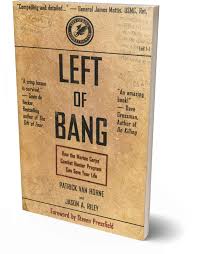This article was originally written for the Illinois Tactical Officer’s Association
We all know that person at work who can seemingly read every situation they find themselves in and turn it into something beneficial for them. It’s like watching action heroes like James Bond or Jason Bourne, people who can seemingly pick up on everything that is happening around them and then use that information to make better decisions than those with untrained eyes. We find ourselves in awe of those naturals who have learned how to dissect situations, find the patterns and seemingly predict the future.
Life might not be like the movies, but those same deliberate observation skills can be developed. While it certainly takes a lot of work to become skilled at recognizing pre-event indicators, for police officers looking to get and stay left of bang, here are three tips to make situational awareness second nature.
#1: Begin With The End In Mind
The way that these naturals so adeptly navigate complex and difficult situations is what often attracts our attention and carries an air of mystery. However, how they find the solution isn’t the first step, it is the last. Before you can Continue reading »


